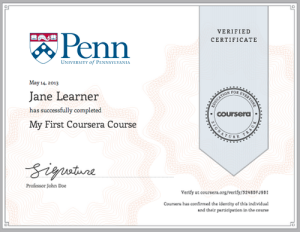
Only 4% of students who enroll for an online course end up completing it, and MOOC providers like Sebastian Thrun are wondering why. In any brick & mortar institution, a course with a 96% fail rate would raise some serious questions. In any brick & mortar institution, a course with an enrollment of 160,000 would be considered a raging success.
MOOCs are not institutions of higher learning.
The Social Aspect is Lost

Formal classroom settings have existed for thousands of years. The purpose of a classroom isn’t just to allow a teacher to disseminate knowledge to an audience, it brings pupils together to turn education into a social transaction.
When I attend lectures, I don’t stand up and walk out halfway through, because I’ll look like an ass. I even try my best to stay awake. However, I never think twice about closing a Coursera browser window mid-lecture. Oftentimes I’ll watch the lecture, but have something open in another window, like porn. This doesn’t work in a physical classroom setting.
The social aspect doesn’t just enforce responsible behavior, it also provides motivation. College students are more likely to attend class if there are cute girls enrolled in the course. And Niles Pierce was the only reason anyone ever took ACM95 at Caltech.
Most of the Courses are Shit
The courses on Coursera and EdX are based on offerings at real universities, but not all universities are created equal. With no published course ratings, it is impossible to gauge the quality of a course before enrolling.
I don’t want to point out shitty courses, but they can be identified by browsing the lectures offered by second-rate universities. Check out what students are paying for tuition at these universities, and it’s easy to see the problem with higher education.
By the way, these courses are all unilateral monologues. There’s no reason why the classes need to be taught by professors. They should just replace the professors with scantily-clad import models. After all, there’s no danger of a student interrupting the lecturer to ask a difficult question. I guarantee that the course completion rate will increase substantially if we have Professor Kate Upton reciting the lecture material.
The Stakes are Too Low

University-level courses are not easy. Sometimes the assignments require hours of thinking and coding. As an undergrad, there were plenty of courses that I would have loved to walk away from, but I stuck around to fill my graduation requirements. On Udacity or Coursera, the reward at the end of the tunnel is a certificate of completion that carries zero weight in the real world. In these cases, I would rather watch cartoons than try to debug my Algorithms homework.
People don’t value what they get for free. Course completion rates are abysmal because enrollment involves clicking a single button. Thanks to flexible course schedules and zero fees, it’s easier to drop a course and pick up a new one than it is to complete an existing course.
A series of open online courses does not constitute a University curriculum, and should not be held to the same standards. Given the lack of interactivity, a closer analog might be a textbook. Charge for the courses what you might charge for a textbook, and expect the course completion rate to be about the same as for those who read a textbook cover to cover.
Online courses are designed for self-guided learning. Students decide for themselves which courses to take, and should similarly decide when they have learned enough to move on. The current model of higher education is in need of change, but the metrics by which we gauge higher education should be first to go.